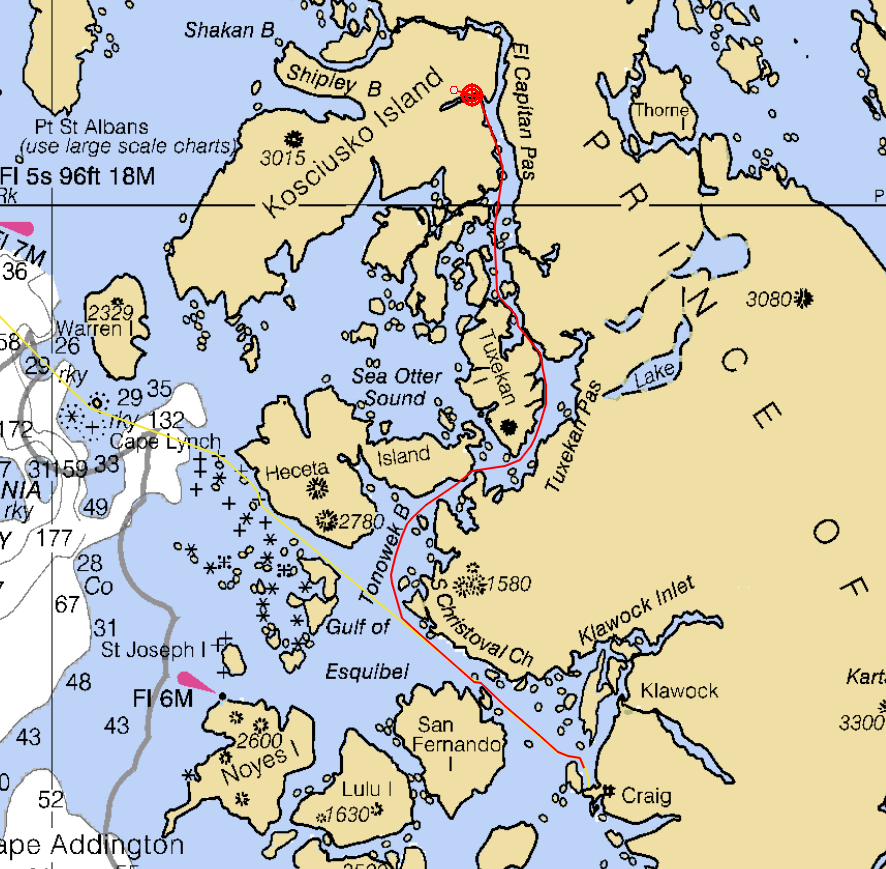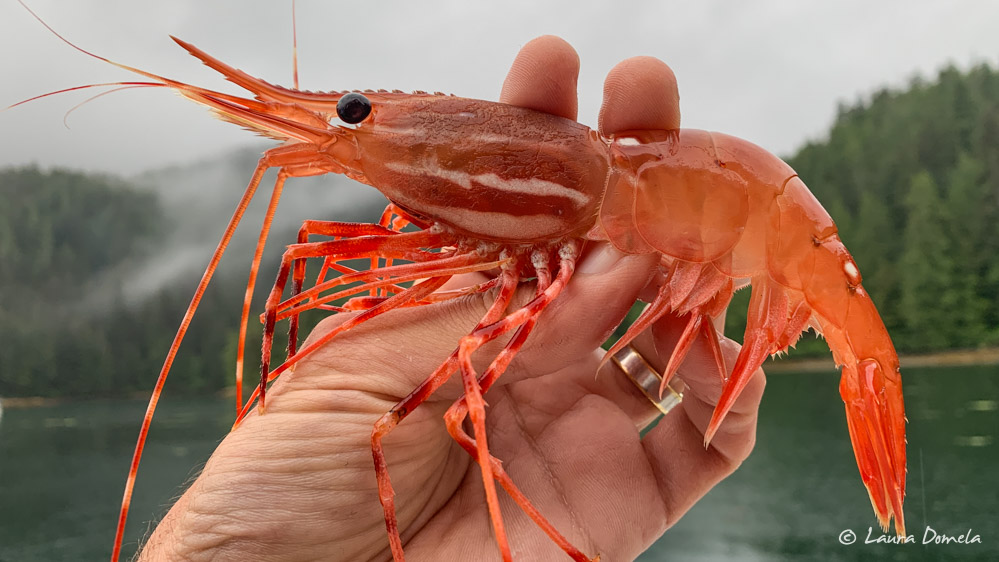Originally when we planned this leg of the trip we’d hoped to continue down from Craig around the south end of Prince of Wales Island, then north to Ketchikan. This is slightly shorter than going over the north end of Prince of Wales Island, but it’s also more exposed. Cape Chacon, at the south end of Prince of Wales Island, juts into Dixon Entrance. To go that route, we needed a good forecast, but we didn’t have it. On the days that worked with our schedule, winds were forecast to be blowing in the mid-20s. So we adjusted and headed north from Craig.
The forecast as we left Craig was downright miserable-sounding: rain, heavy at times, with southeasterly 20-knot winds. Thankfully, our route north from Craig is through a series of well-protected and intricate channels, so the wind didn’t cause a problem, but the rain obscured the view and dampened our enthusiasm for exploring by dinghy.
Our destination was Devilfish Bay, a spacious, easy anchorage that’s a good staging spot for transiting El Capitan Passage the following day. The legend of Devilfish Bay has been a part of the Tlingit culture for more than 400 years, and speaks of a giant devilfish (octopus) that used its enormous tentacles to wipe out an entire village. Some visitors even today report feeling a “creepy vibe” inside the bay.
Outside the narrow, shallow entrance to the inner bay, the wind was calm. But inside at the head of the bay, it was gusting higher than 25 knots. We’d seen this before in Devilfish Bay (that time we slept fitfully, due to the noise of whitecapped waves slapping the boat), and decided to anchor outside the entrance rather than at the head of the bay. This turned out to be a nice spot, with plenty of room for four or five boats, good holding in 50 feet, and totally calm winds.
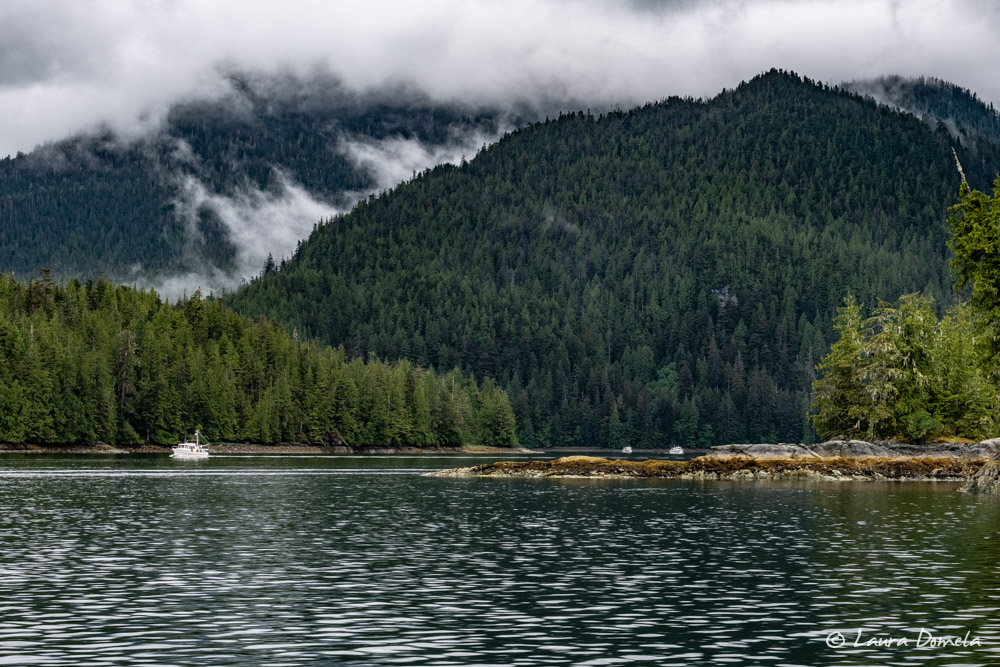
Airship put out a prawn trap and after three hours pulled up 28 big spot prawns!
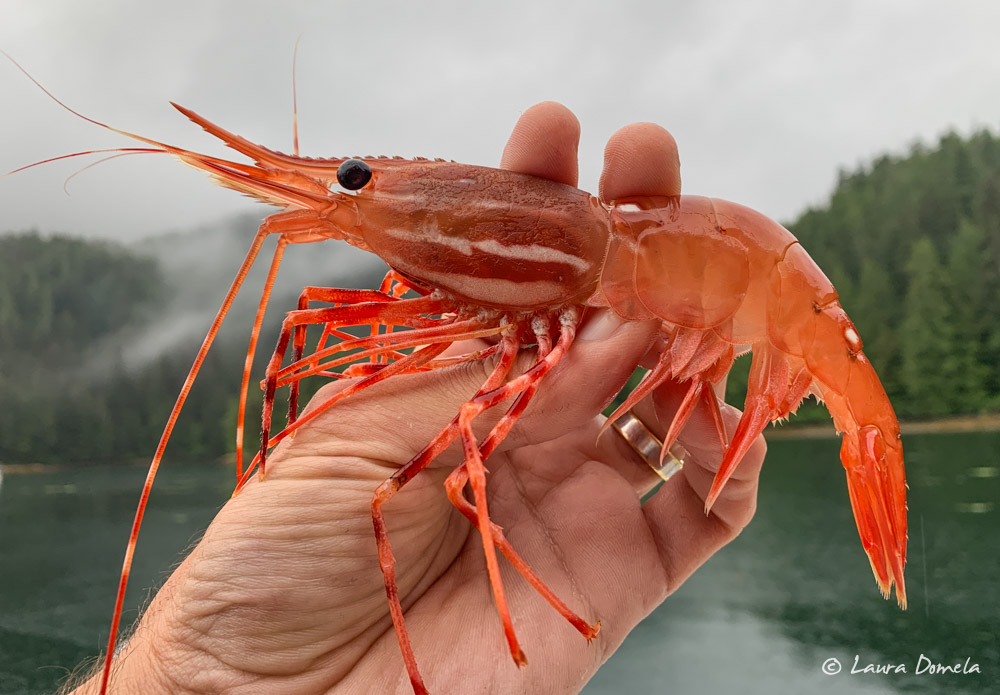
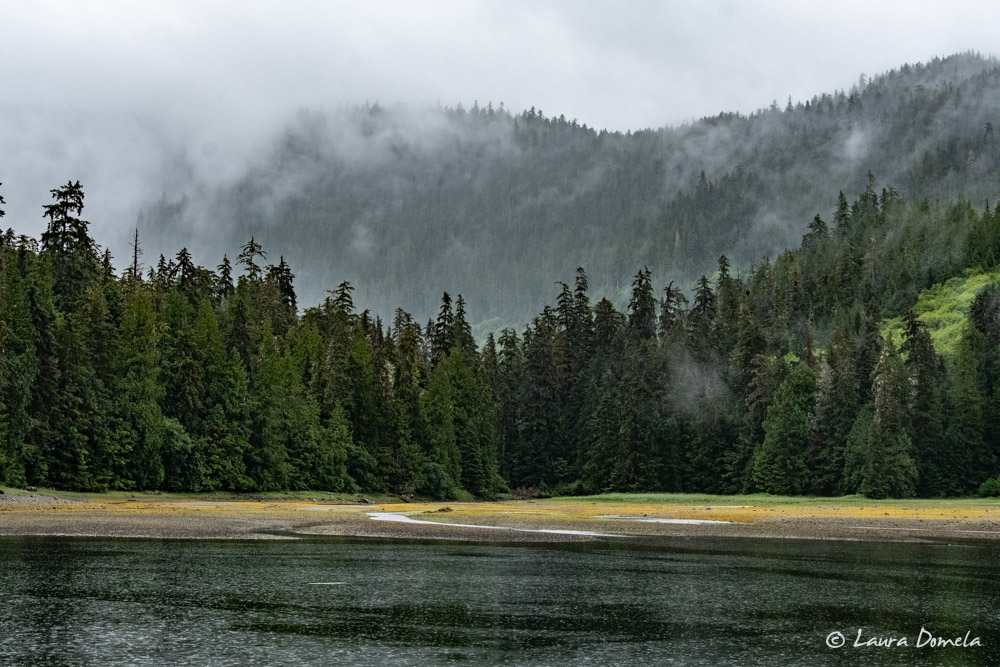
The rain forecast was spot on: we recorded 1.38 inches during the day, the wettest day so far this summer (and the reason for our lack of photos for this day).
